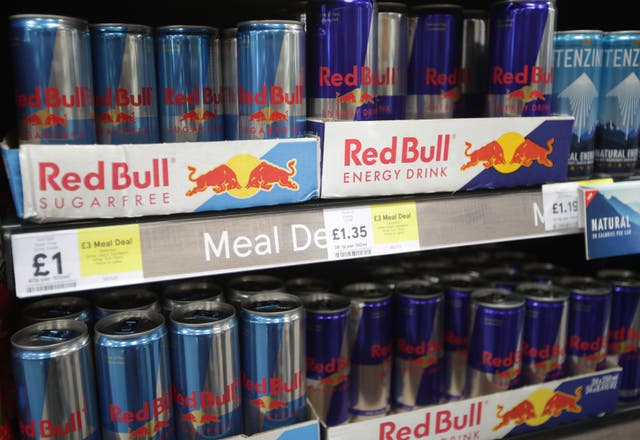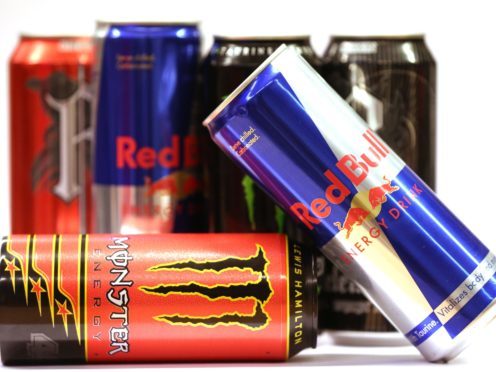Children in England are to be banned from buying energy drinks under Government plans.
A 12-week consultation period will hear a range of views about how the ban should be best applied.
Here the Press Association looks at what the restrictions will mean.
– What is being banned?
Drinks with more than 150mg of caffeine per litre, like Red Bull, Monster, and Relentless, will be affected.

One regular 250ml can of energy drink contains around 80mg of caffeine – equivalent to almost three cans of cola.
Many popular energy drinks now come in 500ml cans.
Sales will be restricted to either over-16s or over-18s, depending on consultation responses.
– What are the concerns?
There are fears children’s health and education are being harmed, with the drinks linked to behavioural issues and poor classroom discipline.
Many also have very high amounts of sugar, contributing to tooth decay and obesity.
Studies have shown regularly consuming large quantities of caffeine can result in increased blood pressure, sleep disturbances, headaches and stomachaches.
Campaigners have also criticised how much children can get their hands on with just pocket money, with four cans of generic 250ml energy drink available for as little as £1.
– Why is it relevant to Britain?
British children consume energy drinks way above the European average, contributing to emotional difficulties and tiredness, public health minister Steve Brine has said.
Do you know how many cubes of sugar are in one energy drink?
Download the FREE Food Scanner app to find out what's really inside your family's food and drink: https://t.co/DZg7psbpad pic.twitter.com/2l30GrENRF
— Change4Life (@Change4Life) April 10, 2018
Nearly 70% of UK children aged 10 to 17 years old consume energy drinks, according to the Government’s childhood obesity plan.
And those who do so are drinking on average 50% more than the EU average for that age group.
Jenny Oldroyd, deputy director for obesity, food and nutrition at the Department of Health and Social Care, has previously warned: “Around a quarter of adolescents are consuming more than three energy drinks in one sitting, so it’s that high level of consumption that concerns us.”
– Why has the issue gained prominence?
A boom in the energy drinks market, high-profile calls from figures such as TV chef Jamie Oliver, and the relatively low cost of some types compared with general soft drinks.
While many major retailers already do not sell to under-16s, just 21% of the UK grocery market, including corner shops, are signed up to voluntary restrictions, No 10 said.
We welcome Sainsbury’s, Morrisons and Tesco joining the growing number of supermarkets banning the sale of high caffeine energy drinks to under 16s. https://t.co/xzc1boI7N8
— Public Health England (@PHE_uk) January 26, 2018
UK energy drink sales jumped by around one-fifth (19%) between 2012 and 2017, with total sales estimated at £1.65 billion last year, according to analysis from market researchers Mintel.
A further 10% growth for the energy drinks market is expected for 2017-22, it added.
– Is the proposed ban only in England?
Yes. Scotland, Northern Ireland and Wales have devolved powers to implement their own bans.
